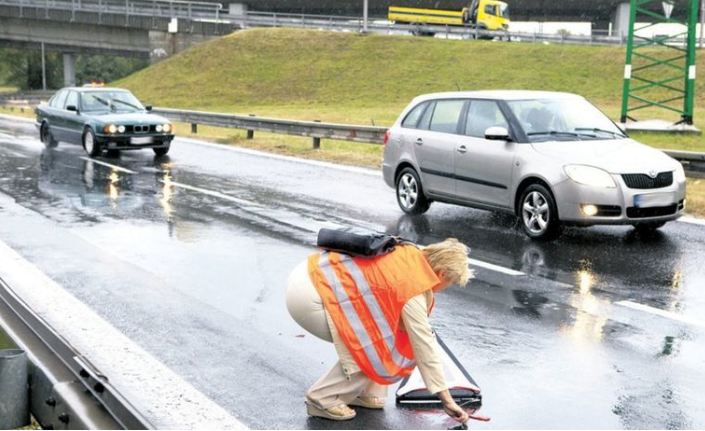Without reflective waistcoat or tape either to the store or to the neighbor. This may look like this year in Slovak villages and towns. In an amendment to the Road Act, the Ministry of the Interior suggests that pedestrians walking along the road should wear safety features in poor visibility if they do not walk on the sidewalk. Today they need to have reflective fabrics on their clothes only when they are outside the village.
With this measure, the Ministry wants to prevent traffic accidents, which usually end to the detriment of pedestrians. Out of the 442 accidents, last year caused by pedestrians, up to 384 has occurred in the village. If they do not have them, they can be fined 60 euros.
“I consider it stupid. In my opinion, it would be sufficient if only cyclists were to have a reflective sign. I cannot imagine that I should always wear such a vest. And there is also a financial factor. In our country, there are ten-member households who live in poor social conditions. I can’t imagine buying a reflective vest for everyone in the family,” says Silvia Juhászová, a 33-year-old resident of Camoviec in the Lučenec district.
Thirty-seven-year-old Fiľakovcan Tomas Csík understands the effort to protect pedestrians but does not agree with fines if they do not have reflective elements. “In the evening I use to walk a few meters to the neighbors. I am careful about cars. When any goes, I step aside to keep my eyes off. I cannot agree with the draft of such a law,” added 64-year-old Jan Hornan from Trebeľovce near Lucenec.
The mayor of Liptovsky Jan Juraj Filo cannot imagine how he explains the new duty to tourists. The village is visited annually by about 500 thousand. “If a foreign visitor gets such a fine for something, he won’t come anymore,” says Filo. The mayor of Strba, Michal Sykora, says there is no need to worry about the reflective elements. “I also try to explain to young people that it is not just a reflective vest, and these reflective elements can also look modern.”
The ministry points out that stricter rules for pedestrians have necessitated a negative trend in the number of accidents in which the most vulnerable road users die or suffer serious injuries. Last year, according to police statistics, 15 people were killed on roads, two of them children. “Pedestrians caused a total of 442 traffic accidents last year, of which 384 were in the village,” police spokeswoman Denisa Balogh said.
On the side of stricter regulations is also inclined to traffic analyst Jozef Drahovský, according to which drivers do not have many possibilities to deal with unmarked pedestrians or cyclists. “They only have to anticipate and think that there may be someone on the road,” he says, not even street lighting helps in dense fogs.
Marian Cabák from the School of Safe Driving says that people are often reluctant to invest even a few euros in reflective things unless they are explicitly ordered to do so. The price for a reflective vest with reflective material ranges from three euros upwards. Similarly, there are other elements, as the law permits them. They can also be reflective belts on the sleeve, smileys on school bags or various other iron-on transfers.
If the proposed amendment passed, the mandatory labeling in the municipality would become the same offense as the non-marking of a pedestrian outside the municipality today. This is subject to a fine of up to EUR 60.
Slovakia is not the only country trying to protect pedestrians with protective features. Czech transport police chief Tomas Lerch said last week that he wanted to create a discussion on mandatory reflective elements for all who would go out at night. He also wants to find a compromise whether it should be in the village, outside or everywhere.

